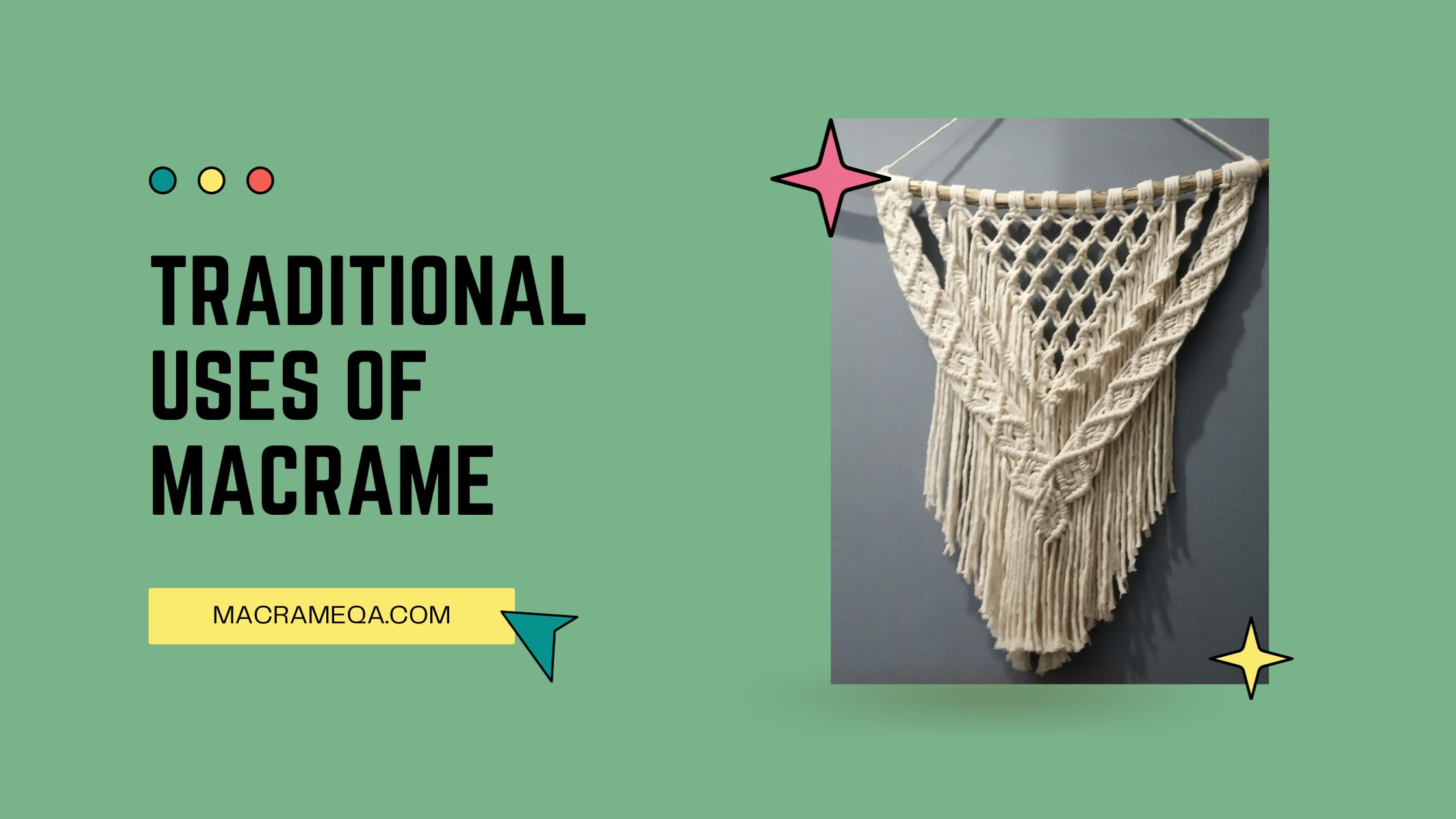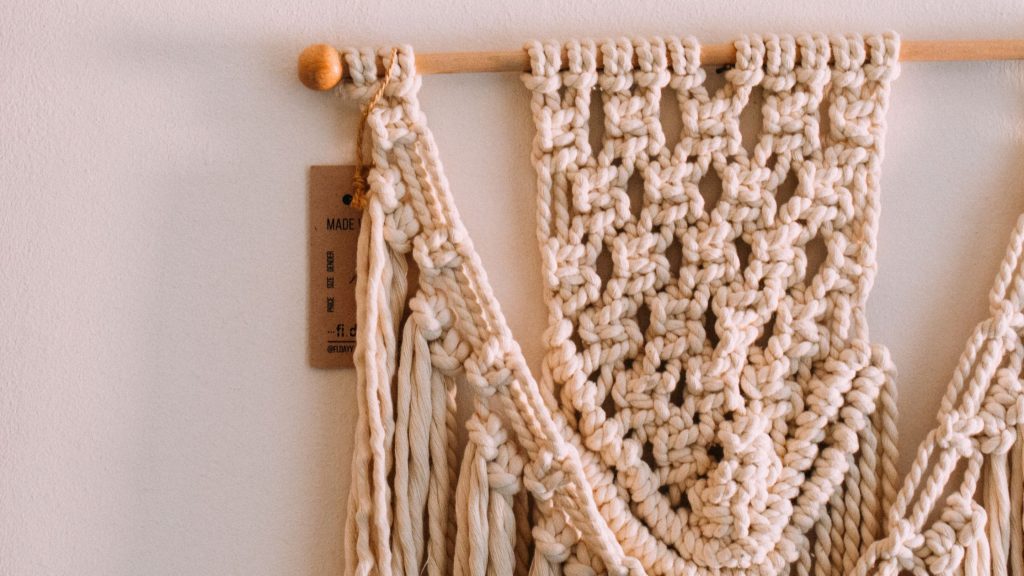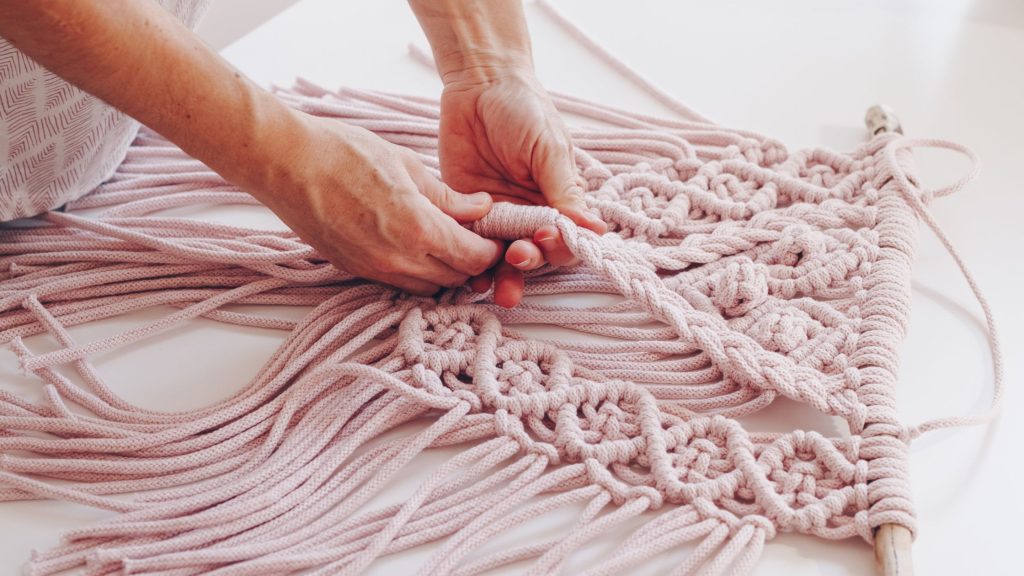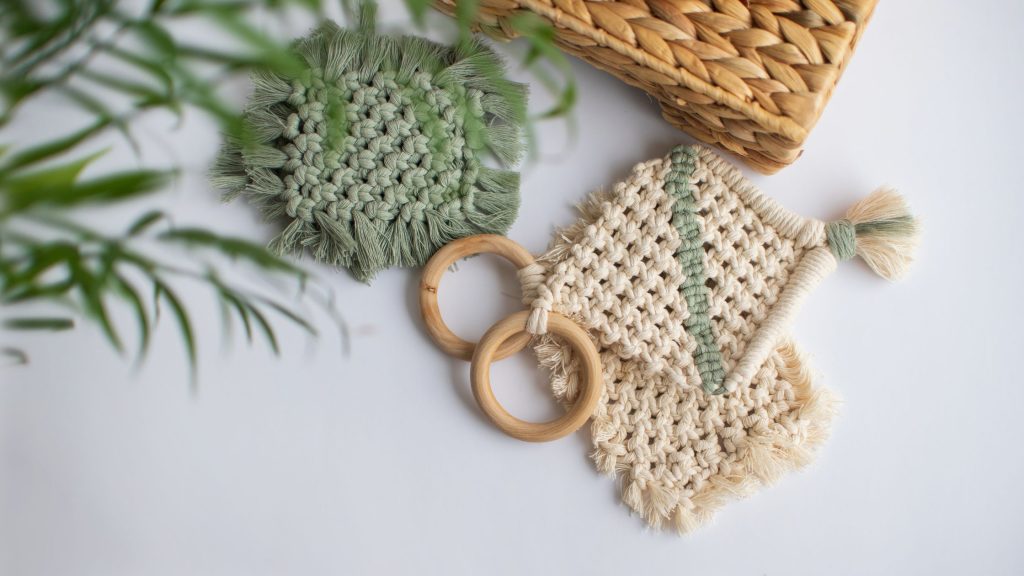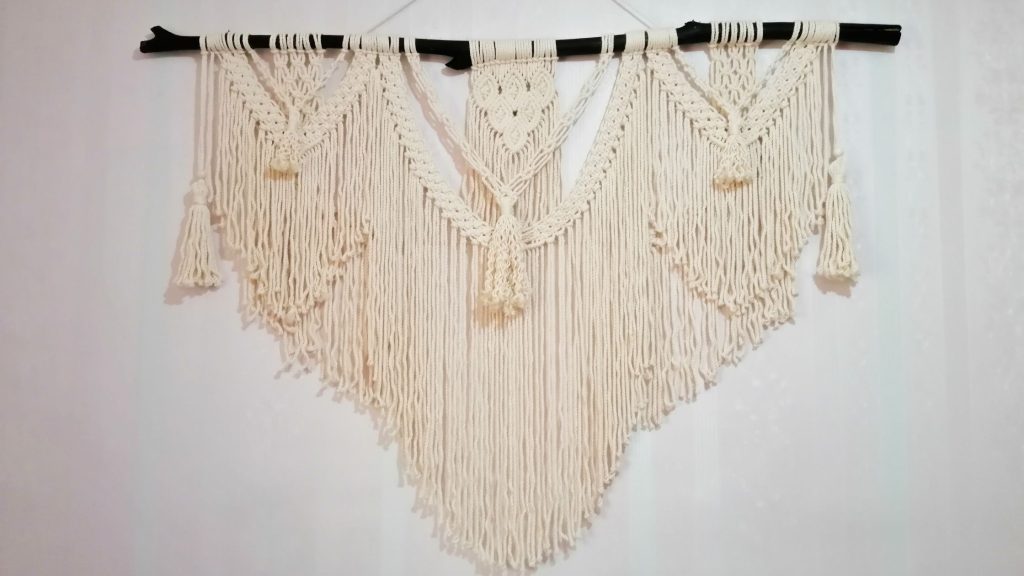Macrame, a textile art form that involves knotting together cords to create intricate patterns, has a rich history rooted in various cultures across the globe. From ancient civilizations to modern-day societies, macrame has been utilized in diverse ways, serving both functional and decorative purposes. From creating clothing and accessories to designing intricate wall hangings and plant hangers, macrame has found its place in the hearts and homes of people from different cultural backgrounds. In this article, we will explore the traditional uses of macrame in various cultures, showcasing the unique beauty and craftsmanship that this art form brings to the world.
Macrame in Different Cultures
Macrame, the art of knotting cords together to create decorative and functional pieces, has a rich history that spans various cultures. From ancient times to the present day, macrame has been an important craft in different parts of the world. Let’s explore the history, techniques, and symbolism of macrame in different cultures.
History of Macrame
The origins of macrame can be traced back to ancient times, with evidence of its use found in textiles from various cultures. The word “macrame” is believed to have originated from the Arabic word “miqramah,” which means “fringe.” It is said that the Moors introduced this craft to Spain during their occupation in the early 8th century.
Macrame gained popularity during the Renaissance period in Europe, particularly in Italy and France. It became a fashionable way to adorn clothing and home accessories. Sailors also practiced macrame during their long voyages, creating intricate knotting patterns as a form of relaxation.
Techniques Used in Macrame
Macrame techniques vary across different cultures, but the basic principle remains the same – using knots to create patterns and designs. The most common knots used in macrame include the square knot, the half-hitch knot, and the lark’s head knot.
In addition to knots, macrame often incorporates other techniques such as weaving, braiding, and wrapping. These techniques add depth and texture to the finished piece. Each culture has its unique style and combination of techniques, resulting in distinct macrame designs.
Symbolism in Macrame Art
Macrame has often been more than just a decorative craft; it holds symbolism and meaning in many cultures. In some traditions, macrame is believed to bring protection, luck, or spiritual enhancement to the individuals who wear or display the pieces. Certain knots and patterns are associated with specific meanings, such as love, friendship, or fertility.
The symbolism in macrame art varies across cultures. For example, in Native American culture, macrame is believed to connect the physical and spiritual worlds, making it an important part of ceremonies and rituals. In South American cultures, macrame is often used to create dreamcatchers, which are thought to trap negative dreams and protect the sleeper.
Macrame in Ancient Egyptian Culture
Ancient Egypt is known for its rich history and advanced civilization. Macrame played a significant role in Egyptian culture, both for decorative purposes and practical applications.
Ancient Egyptian Macrame Techniques
Macrame was extensively practiced in ancient Egypt, with evidence of its use dating back to 1550 BCE. The Egyptians used a variety of knotting techniques to create intricate designs. One notable technique was the “ankh” knot, which resembles the shape of the ankh cross, an ancient Egyptian symbol of life.
Uses of Macrame in Ancient Egypt
In ancient Egyptian culture, macrame was not only a decorative art but also had practical uses. Macrame was used to create intricate belts, collars, and headbands for both men and women. These pieces were often adorned with precious gemstones, reflecting the wealth and status of the wearer.
Macrame was also used in the production of burial shrouds and funeral accessories. The Egyptians believed that macrame had protective qualities, which would safeguard the deceased during their journey to the afterlife. The intricate knotting patterns symbolized the eternal cycle of life and death.
Macrame in Native American Culture
Native American culture is deeply rooted in tradition and spirituality. Macrame has been an integral part of Native American art, with its unique techniques and symbolic meanings.
Traditional Macrame Techniques of Native Americans
Native American macrame traditionally utilizes natural materials such as feathers, beads, and shells, along with natural fibers like plant fibers or animal sinew. The techniques used vary among different tribes, but some common techniques include the square knot, the double half-hitch knot, and the weaving of intricate patterns.
Significance of Macrame in Native American Culture
Macrame holds great significance in Native American culture, representing the interconnectedness of all living beings and the natural world. Native Americans believe that through macrame, they can connect with their ancestors and the spirits of the land.
Macrame is often used to create ceremonial garments, such as regalia for dances and powwows. These garments are adorned with sacred symbols and designs that have deep spiritual meanings. Macrame is also used to create dreamcatchers, which are believed to filter out bad dreams and protect the dreamer.
Macrame in Chinese Culture
Chinese culture boasts a rich history of artistic expression and craftsmanship. Macrame has long been an important part of Chinese traditions, with its unique knots and applications.
Chinese Macrame Knots
Chinese macrame is characterized by its intricate knotting techniques, which have been passed down through generations. One notable Chinese macrame knot is the “raindrop knot,” which resembles a raindrop falling into water. It is believed to bring prosperity and good fortune.
Another popular knot in Chinese macrame is the “button knot,” which symbolizes unity and harmony. These knots are often used to create decorative tassels, jewelry, and textile accessories.
Applications of Macrame in Chinese Traditions
In Chinese culture, macrame has a wide range of applications. It is commonly used in the creation of accessories such as belts, wristbands, and handbags. Macrame is also used to create decorative items, including window curtains, wall hangings, and table runners.
Macrame is deeply ingrained in Chinese wedding traditions. It is used to create intricate decorative knots known as “Chinese love knots,” which are often incorporated into wedding dresses, invitations, and décor. These knots symbolize everlasting love and unity.
Macrame in Middle Eastern Cultures
The Middle East is known for its rich cultural heritage and intricate craftsmanship. Macrame has played a significant role in the art and traditions of this region for centuries.
Traditional Macrame Patterns in the Middle East
Middle Eastern macrame is characterized by its exquisite patterns and attention to detail. One prominent pattern is the “Arabesque,” which consists of interlocking geometric shapes and floral motifs. These intricate patterns are often used in the creation of textiles, rugs, and tapestries.
Another significant macrame pattern in the Middle East is the “Hamsa,” also known as the Hand of Fatima. This symbol is believed to bring good luck and protection against evil spirits, making it a popular motif in macrame art.
Decorative and Functional Macrame Items in Middle Eastern Cultures
Macrame is used both for decorative purposes and functional items in Middle Eastern cultures. It is commonly employed in the creation of window coverings, room dividers, and wall hangings.
In addition to decorative pieces, macrame is also used to create functional items such as baskets, bags, and belts. These items showcase the craftsmanship and creativity of the artisans while serving practical purposes in daily life.
Macrame in South American Cultures
South America is known for its vibrant and diverse cultures, each with its macrame traditions and techniques. Let’s explore how macrame is used in different South American cultures.
South American Macrame Techniques
South American macrame is characterized by its use of bright colors, intricate patterns, and natural materials. Traditional South American macrame often incorporates materials such as wool, cotton, and dyed fibers. Various knotting techniques are used, including the square knot, the spiral knot, and the alternating square knot.
Each South American culture has its unique macrame techniques. For example, Peruvian macrame is known for its elaborate patterns and intricate designs, while Brazilian macrame often includes beads and feathers for added embellishment.
Cultural Uses and Meanings of Macrame in South America
In South America, macrame is deeply intertwined with the cultural and spiritual practices of various indigenous tribes. Macrame is used to create traditional clothing, accessories, and ceremonial items.
One notable use of macrame in South America is the creation of “warp suspending cords” in Andean weaving. These cords are used to suspend the loom, enabling the weaver to create intricate textiles with ease. Macrame is also used to create belts, headbands, and jewelry that hold spiritual significance and reflect the cultural heritage of the wearer.
Macrame in European Cultures
European cultures have a long history of macrame, with unique styles and techniques originating from various regions. Let’s explore the use of macrame in Viking, Celtic, and Eastern European folklore.
Macrame in Viking Culture
Macrame played a significant role in Viking culture, particularly in the creation of practical items such as fishing nets and ropes. The Vikings used intricate knotting techniques to create durable and functional pieces, reflecting their maritime lifestyle.
Viking macrame often incorporated leather, wool, and flax fibers. The techniques used by the Vikings laid the foundation for a tradition of knotting that has continued throughout European history.
Macrame in Celtic Culture
Macrame has deep roots in Celtic culture, with intricate knotwork being a prominent feature in Celtic art. Celtic knots, such as the Trinity knot and the Celtic cross, are commonly found in macrame designs.
Macrame was used to create various items in Celtic culture, including clothing accessories, jewelry, and decorative ornaments. These intricate knots symbolized concepts like eternity, interconnectedness, and the continuity of life.
Macrame in Eastern European Folklore
Eastern Europe has its unique macrame traditions and techniques. In regions such as Poland, Hungary, and Romania, macrame was used to create traditional clothing and accessories.
Eastern European macrame often incorporates colorful beads, embroidery, and metal accents. The patterns and designs reflect the folklore and cultural heritage of the region, with each country having its distinct style.
Macrame in African Cultures
Africa is a continent rich in diverse cultures and artistic traditions. Macrame has been an integral part of African culture, playing a significant role in craft and ceremonial practices.
African Macrame Designs and Techniques
African macrame is characterized by its use of natural materials, such as fibers from plants like sisal and raffia. Macrame techniques in Africa often involve a combination of knotting, weaving, and braiding.
Each African region has its unique macrame designs and techniques. For example, the Ashanti people of Ghana create intricate macrame patterns known as “Kente” using colorful woven cloth strips. In Ethiopia, macrame is used to create traditional “Meshela” belts adorned with intricate patterns and symbols.
Traditional Purposes and Symbolism in African Macrame
In African cultures, macrame has both practical and symbolic purposes. Macrame is used to create items such as baskets, rugs, and bags that have everyday functionality. These pieces often showcase the intricate weaving and knotting techniques unique to each African community.
Symbolically, macrame in African cultures represents cultural identity, spirituality, and storytelling. Certain patterns and motifs are used to convey specific meanings, such as fertility, protection, or the connection to ancestors. Macrame is often incorporated into ceremonial dress and rituals, preserving the cultural heritage and traditions of African communities.
Macrame in Australian Aboriginal Culture
Australia’s Indigenous culture is one of the oldest in the world, with a deep connection to the land and spiritual beliefs. Macrame has been an important craft in Australian Aboriginal culture, carrying profound spiritual and cultural significance.
Traditional Macrame Techniques and Patterns in Aboriginal Culture
Australian Aboriginal macrame traditionally utilizes natural materials such as plant fibers, feathers, and shells. Techniques include knotting, weaving, and wrapping, with each technique holding specific meanings within the cultural context.
The patterns and designs in Aboriginal macrame often carry stories and Dreamtime narratives that are passed down through generations. The use of colors and symbols represents ancestral connections and the spirit of the land.
Spiritual and Cultural Significance of Macrame in Australia
Macrame holds deep spiritual and cultural significance in Australian Aboriginal culture. It is used to create ceremonial items, such as belts, headbands, and body adornments. These items are often worn during rituals and ceremonies to connect with the ancestral spirits and the Dreaming.
Macrame is also used to create intricate string bags, known as “dilly bags,” which were traditionally used for gathering and carrying food. These bags played a vital role in Aboriginal culture, symbolizing the importance of sustenance and the connection to the land.
Macrame in Modern Global Culture
In modern times, macrame has experienced a resurgence in popularity as a craft and form of self-expression. It has found a place in global culture, with contemporary applications and creative interpretations.
Macrame as a Popular Craft
Macrame has become a popular craft around the world, with countless individuals exploring its creative possibilities. It is now widely practiced as a hobby, with many people creating macrame plant hangers, wall hangings, and jewelry.
The accessibility and versatility of macrame have made it a favorite among DIY enthusiasts and artisans. Online tutorials, workshops, and social media platforms have contributed to the growing popularity of macrame as a craft.
Contemporary Applications of Macrame
In addition to its traditional uses, macrame has found new applications in modern design and fashion. Interior designers incorporate macrame wall hangings and plant hangers to add texture and bohemian flair to spaces.
Fashion designers experiment with macrame techniques to create unique clothing items and accessories. Macrame is also used in the creation of contemporary art installations, adding a touch of handmade craftsmanship to the world of contemporary art.
Conclusion
As macrame continues to evolve and adapt to modern global culture, its rich history and cultural significance remind us of the interconnectivity and beauty of diverse traditions. Whether practiced for practical purposes or artistic expression, macrame serves as a testament to the creativity and ingenuity of different cultures throughout history.

